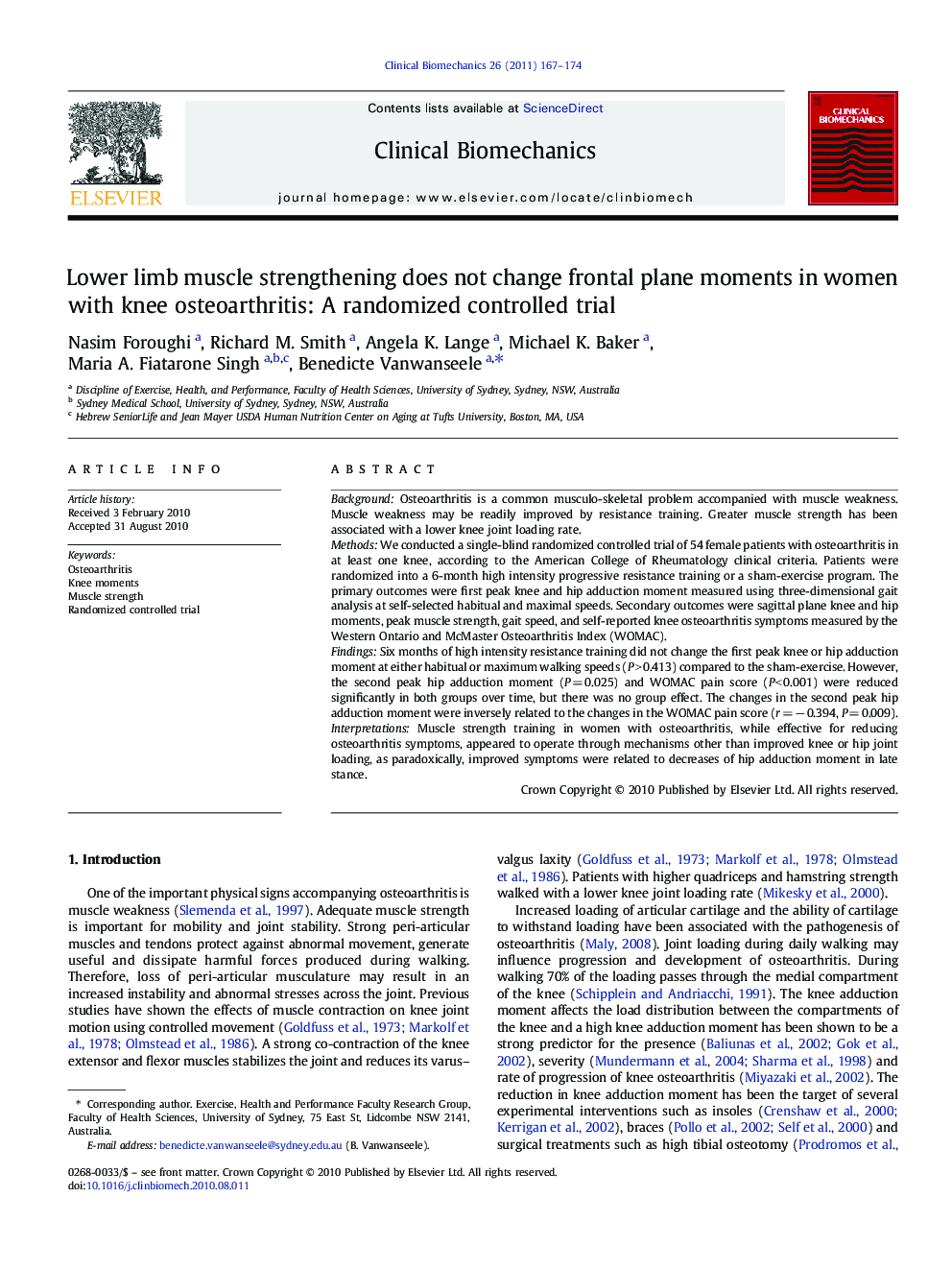| کد مقاله | کد نشریه | سال انتشار | مقاله انگلیسی | نسخه تمام متن |
|---|---|---|---|---|
| 4050867 | 1264962 | 2011 | 8 صفحه PDF | دانلود رایگان |

BackgroundOsteoarthritis is a common musculo-skeletal problem accompanied with muscle weakness. Muscle weakness may be readily improved by resistance training. Greater muscle strength has been associated with a lower knee joint loading rate.MethodsWe conducted a single-blind randomized controlled trial of 54 female patients with osteoarthritis in at least one knee, according to the American College of Rheumatology clinical criteria. Patients were randomized into a 6-month high intensity progressive resistance training or a sham-exercise program. The primary outcomes were first peak knee and hip adduction moment measured using three-dimensional gait analysis at self-selected habitual and maximal speeds. Secondary outcomes were sagittal plane knee and hip moments, peak muscle strength, gait speed, and self-reported knee osteoarthritis symptoms measured by the Western Ontario and McMaster Osteoarthritis Index (WOMAC).FindingsSix months of high intensity resistance training did not change the first peak knee or hip adduction moment at either habitual or maximum walking speeds (P > 0.413) compared to the sham-exercise. However, the second peak hip adduction moment (P = 0.025) and WOMAC pain score (P < 0.001) were reduced significantly in both groups over time, but there was no group effect. The changes in the second peak hip adduction moment were inversely related to the changes in the WOMAC pain score (r = − 0.394, P = 0.009).InterpretationsMuscle strength training in women with osteoarthritis, while effective for reducing osteoarthritis symptoms, appeared to operate through mechanisms other than improved knee or hip joint loading, as paradoxically, improved symptoms were related to decreases of hip adduction moment in late stance.
Journal: Clinical Biomechanics - Volume 26, Issue 2, February 2011, Pages 167–174